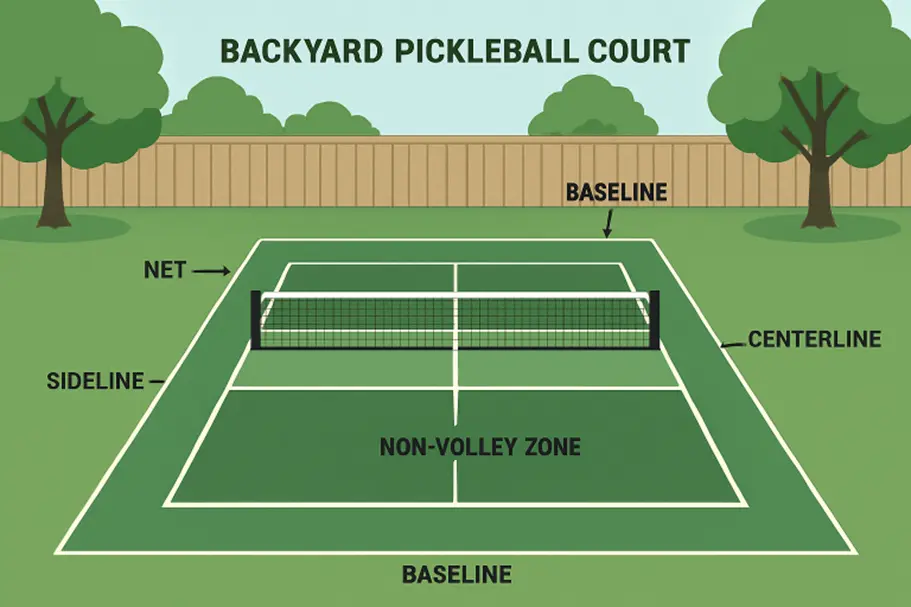Introduction
With pickleball’s explosive rise in popularity, many enthusiasts are dreaming of building their outdoor courts. Not only does a personal court provide consistent access for play and training, but it also offers a canvas for creativity—letting you design a recreational hub unique to your property. Before you dive into your project, it’s crucial to familiarize yourself with planning basics, materials, and best practices for a successful build. One of the first questions you might ask is how much does it cost to build a pickleball court. Understanding budgets and what factors most impact costs will help you make informed decisions every step of the way.
Careful preparation ensures your pickleball court becomes a long-lasting source of exercise and fun. Let’s take a look at how to approach site selection, pick the best court surface, and add enhancements that can transform your outdoor space.
Assessing Your Space and Planning
Choosing the perfect spot is the foundation of every successful court. Start by measuring your available area—a standard pickleball court is 20 feet wide by 44 feet long, but plan for a total envelope of at least 30 by 60 feet so that players have ample room to move and spectators can safely observe. Remove all obstacles such as rocks, trees, or overhead wires, and assess the site’s natural grading. Level ground is best for gameplay and drainage, minimizing both installation challenges and future repair costs.
When planning orientation, position your court north-south whenever possible to reduce sun glare during matches. Also, check with local zoning or homeowner associations for restrictions or permit requirements—a skipped step here could result in costly project delays.
Choosing the Right Surface Material
The court surface both defines the quality of play and largely determines maintenance needs. Here are popular options:
- Concrete: Preferred for its strength and even bounce, concrete is a low-maintenance surface that withstands years of wear. Add a specialized acrylic coating for ideal grip and color customization.
- Asphalt: Generally less expensive to install, asphalt offers decent performance but is more prone to weathering and cracking over time, especially in freeze-thaw climates.
- Modular Tiles: These shock-absorbing interlocking tiles are easy to lay over existing concrete or asphalt, reducing impact on joints and simplifying future repairs. Plus, they come in vibrant colors and textures.
Your local climate, budget, and how often you intend to play should guide your choice. Modular tile systems, while pricier upfront, can pay dividends in longevity and daily enjoyment.
Incorporating Multipurpose Features
Maximize your investment by making your court a multi-use family destination. Integrate basketball hoops on either end, or include removable volleyball or badminton nets for quick setup. Marking out multi-sport lines in contrasting paint colors can expand the versatility without sacrificing clarity or gameplay for pickleball. If your family enjoys a variety of activities, this is a cost-effective strategy that broadens the court’s appeal. Multi-use courts also support future needs and evolving interests—think birthday parties, fitness classes, or community gatherings.
Enhancing the Playing Experience
Professional-grade features turn a backyard court into a year-round social hub. Install energy-efficient LED lighting to extend evening play; solar-powered options minimize operational costs and are eco-friendly. Comfortable benches and shaded spectator areas boost enjoyment for players and guests, while strategic landscaping softens the court’s boundaries and integrates it with the rest of the yard. Natural screens like hedges, ornamental grasses, or fencing can provide privacy and a noise buffer, essential for peaceful suburban or urban living.
Incorporating attention to both aesthetics and usability ensures your court feels welcoming and encourages frequent use, fostering connections with family and neighbors. For players looking to elevate their comfort and performance, investing in high-quality pickleball shoes for men can make a noticeable difference during extended matches.
Regular Maintenance and Safety
Even the most thoughtfully designed court needs upkeep. Inspect for cracks or surface wear monthly, addressing small issues before they spread. Keep the area clear of leaves, dirt, and standing water to prevent slippery conditions. Clean modular surfaces or painted courts as directed by manufacturer guidelines; some materials benefit from power washing, while others may degrade with harsh chemicals. Safety remains paramount—replace damaged nets, check lighting regularly, and keep walkways clear. These habits prevent accidents and extend the life of your investment.
Budget Considerations
Costs for a full outdoor pickleball court range widely based on size, surface, and amenities—as detailed in resources. Major considerations include excavation, surface preparation, fencing, lighting, and additional features like basketball hoops or custom landscaping. To keep expenses in check, consider repurposing old tennis or basketball courts, utilizing durable but budget-friendly materials, and implementing non-essential upgrades in phases. Sourcing local contractors and comparing quotes will also help manage overall spending.
Engaging the Community
Your court can become the heart of neighborhood activity. Organize regular games, holiday tournaments, or introductory clinics to introduce newcomers to the sport. Shared maintenance and event planning foster community bonds, and hosting gatherings means your investment delivers far more than personal enjoyment. The court can serve as a platform for school groups, clubs, or multi-generational family memories.
Building a backyard pickleball court offers lasting benefits—fitness, friendship, and fun. With careful planning and creative design, your outdoor court will become a beloved gathering place for years to come.
Also Read-How to Choose the Right Online Surgical Tech Program (And Avoid Scams)

